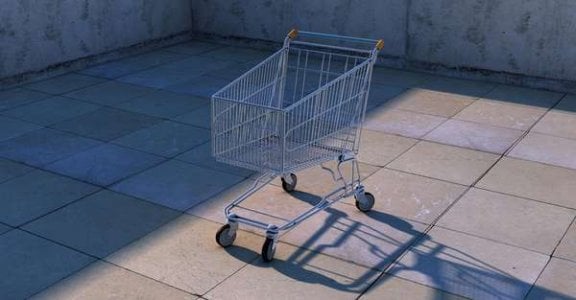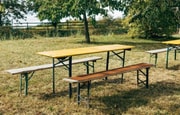Woolworths shoppers slam car park behaviour showing '"I don't care" attitude'
By
Danielle F.
- Replies 49
As we navigate supermarket aisles and fill our trolleys with weekly essentials, it's easy to overlook the journey of our trusty shopping companion after unloading groceries.
However, a recent incident has brought to light a 'shameful' act that caused frustration among shoppers.
This often-called-out attitude also costs supermarkets and customers millions of dollars.
A man accompanying his elderly mother went to a Woolworths store in Woodvale Shopping Centre.
Upon returning to the car park, they spotted a Woolworths shopping trolley carelessly abandoned between their vehicle and another.
The frustration was palpable as the trolley return bay was just a short walk away.
'My elderly disabled mother couldn't get into the car. Whoever you are, you should be ashamed of yourself,' the man lamented.
Abandoned shopping trolleys are not just a matter of inconvenience—they are also a costly nuisance.
The man echoed the sentiments of many Australians who encountered this 'common problem in all shopping areas'.
'This has happened to me countless times,' another shopper said.
'It's just utter laziness and an "I don't care" attitude.'
Trolleys left astray in car parks could block parking spaces, impede traffic flow, and cause car damage.
Beyond the confines of the car park, these trolleys could also find their way into local parks and waterways, becoming an environmental hazard.
Ocean Crusaders member Ian Thomson highlighted that replacing these trolleys trickles down to consumers through increasing grocery prices.
Woolworths has responded to the widespread concern.
'We understand abandoned trolleys can be a nuisance, and that's why we invest millions in collection services and have additional measures in place to help mitigate their impact on the community,' a Woolworths spokesperson shared.
Additionally, Woolworths introduced an anti-theft locking mechanism, immobilising the trolley once it leaves a predefined perimeter.
Another supermarket giant, Coles, has adopted a similar approach to combat the growing trolley problem.
Despite these efforts, the problem continues to persist.
It's a stark reminder of the collective responsibility we share as shoppers.
Returning a shopping trolley to its designated place could save millions of dollars and be used for improving services and keeping prices low.
So, next time you're at Woolworths or any supermarket, spare a thought for where your trolley ends up.
It's not just about avoiding a 'trolley fine' or the inconvenience it may cause to another shopper; it's about the broader impact on the environment and our wallets.

Have you encountered abandoned trolleys in your local car park? What solutions would you suggest to help mitigate this problem? We would love to hear your experiences and opinions on this issue in the comments section below.
However, a recent incident has brought to light a 'shameful' act that caused frustration among shoppers.
This often-called-out attitude also costs supermarkets and customers millions of dollars.
A man accompanying his elderly mother went to a Woolworths store in Woodvale Shopping Centre.
Upon returning to the car park, they spotted a Woolworths shopping trolley carelessly abandoned between their vehicle and another.
The frustration was palpable as the trolley return bay was just a short walk away.
'My elderly disabled mother couldn't get into the car. Whoever you are, you should be ashamed of yourself,' the man lamented.
Abandoned shopping trolleys are not just a matter of inconvenience—they are also a costly nuisance.
The man echoed the sentiments of many Australians who encountered this 'common problem in all shopping areas'.
'This has happened to me countless times,' another shopper said.
'It's just utter laziness and an "I don't care" attitude.'
Trolleys left astray in car parks could block parking spaces, impede traffic flow, and cause car damage.
Beyond the confines of the car park, these trolleys could also find their way into local parks and waterways, becoming an environmental hazard.
Ocean Crusaders member Ian Thomson highlighted that replacing these trolleys trickles down to consumers through increasing grocery prices.
Woolworths has responded to the widespread concern.
'We understand abandoned trolleys can be a nuisance, and that's why we invest millions in collection services and have additional measures in place to help mitigate their impact on the community,' a Woolworths spokesperson shared.
Additionally, Woolworths introduced an anti-theft locking mechanism, immobilising the trolley once it leaves a predefined perimeter.
Another supermarket giant, Coles, has adopted a similar approach to combat the growing trolley problem.
Despite these efforts, the problem continues to persist.
It's a stark reminder of the collective responsibility we share as shoppers.
Returning a shopping trolley to its designated place could save millions of dollars and be used for improving services and keeping prices low.
So, next time you're at Woolworths or any supermarket, spare a thought for where your trolley ends up.
It's not just about avoiding a 'trolley fine' or the inconvenience it may cause to another shopper; it's about the broader impact on the environment and our wallets.
Key Takeaways
- A frustrated shopper highlighted the issue of abandoned shopping trolleys in a Woolworths car park, which impeded his elderly mother's accessibility.
- Abandoned trolleys not only cause inconvenience but could also lead to costs associated with collection and replacement.
- Woolworths spent millions on combating the problem by doing 'regular sweeps' and installing anti-theft locking mechanisms on trolleys.
- The act of abandoning trolleys has been a common issue across shopping centres, often seen as a disregard for other community members.








